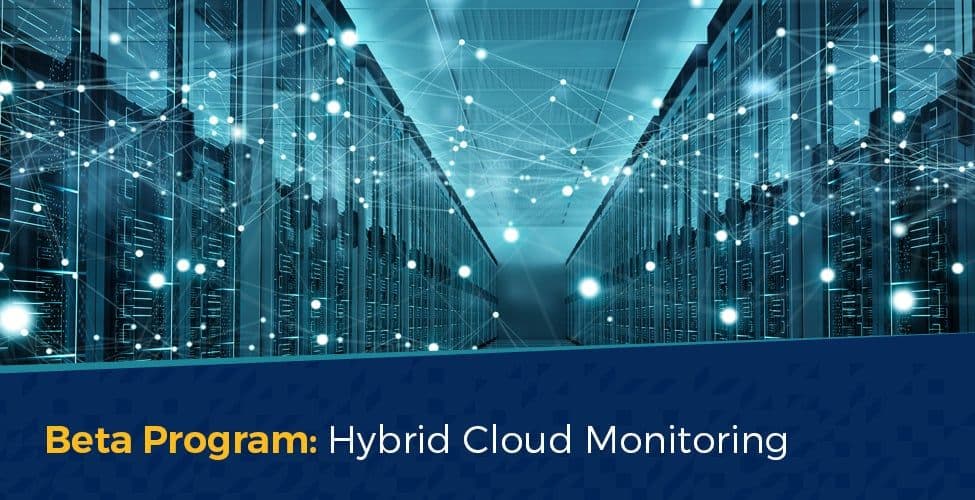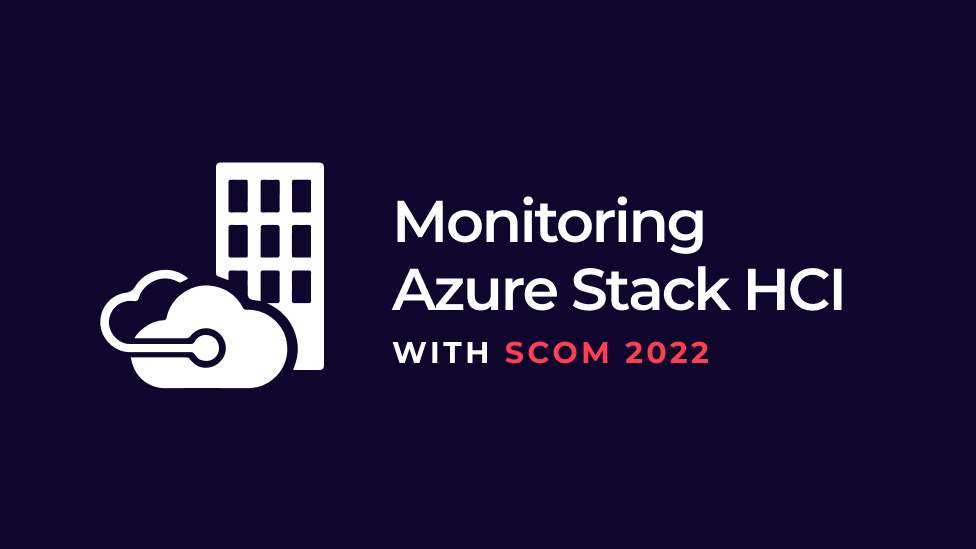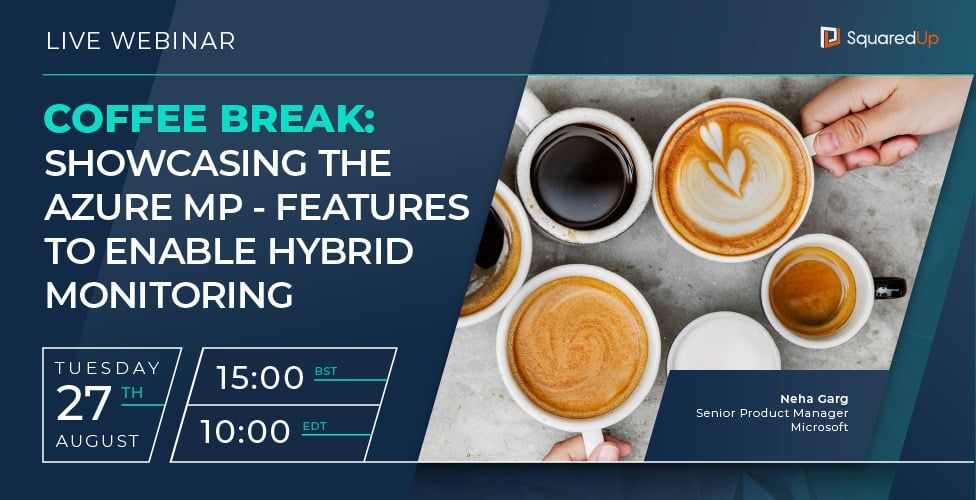
Hybrid Cloud Monitoring with SCOM – Beta Program
What place is there for SCOM in a hybrid cloud world?
That’s the question lots of enterprise IT organizations are asking themselves right now. They’re moving to the cloud, there’s no doubt of that, and the majority of Microsoft’s new monitoring investments are happening in Azure, there’s no doubting that either.
So, does that mean no place for SCOM anymore?
Well, what’s also clear is that cloud workloads make up only a small percentage of the total, the majority is still on-prem and will be for a good while yet.
So, hybrid cloud it is then.
What’s more, whilst there’s lots of cool new monitoring technology available in Azure and from other cloud services, customers have a significant investment in SCOM and, more importantly, don’t want to monitor IaaS resources in Azure, AWS or any other cloud separately from their main on-prem works. At the end of the day, it’s all just VMs, right? (perhaps excluding a tiny percentage of true PaaS apps, but there’s a high chance they’re being monitored by a dedicated APM technology already).
We got a pertinent email from a customer of ours last year, clearly outlining the problem space:
“We have a significant initiative in progress on our journey towards Cloud-first and many have questioned the relevance of SCOM in this space. Others have indicated that SCOM is not fit for purpose as a hybrid cloud monitoring platform and that perhaps the built-in offerings on Azure and other vendors or possibly an app-focused monitoring tool like New Relic may be the way to go. However, given the ongoing investment in IaaS VMs in Azure/AWS as well as in on-premise datacenters, we still view SCOM as a viable cornerstone to monitoring… The direction remains relatively unclear on when/if SCOM to OMS transition will take place, so we continue to watch this closely with the rest of the industry. What’s clear though is that businesses are not embracing the SaaS/PaaS play as their default and only go-to model. Increasingly it seems the journey to cloud is more on moving VMs to cloud data centers vs refactoring applications into PaaS/containers/etc.”
Sound familiar?
It’s the same story we’ve heard from hundreds of other customers, as well as the common complaint that, exciting though they are, new Azure monitoring services are much better suited to ‘cloud native’ applications and services and less readily applicable to more traditional on-prem workloads. However, because that’s where all Microsoft’s focus and investment is happening, not a lot is being done to look at the challenges of monitoring hybrid cloud environments with SCOM itself.
This presents some pretty big problems for customers; are you supposed to throw everything out and start again just because some of your workloads are now in Azure or AWS?
We don’t think so.
We believe SCOM is being incorrectly overlooked for hybrid cloud monitoring, partly for the reasons described above, partly because of a lot of churn and uncertainty around OMS generally, and partly due to generally confusing messaging from Microsoft in this area (we’ve heard plenty of people say they didn’t realise you can put a SCOM agent on cloud VMs).
We also believe that rather than creating new monitoring silos by deploying new tools for new workloads (as well as additional expense and overheads), there are clear benefits of extending existing monitoring practice and management to your cloud resources.
However, we’re the first to admit there are some problems...
Firstly, whilst there is an official Azure MP, we have to say we’re not massively impressed with it and, to be honest, aren’t surprised it’s not been widely adopted. That’s probably enough said on that subject.
Secondly, there’s the age-old problem of cumbersome SCOM agent deployment/approval and slow discoveries, which typically means SCOM isn’t well-suited to monitoring IaaS VMs which, by their very nature, are often used in scenarios where they’re rapidly spun up and then spun back down again. We know of one major customer with over a decade of heavy investment in SCOM and custom Management Packs who dropped SCOM for precisely this reason.
Luckily, we weren’t just going to sit on our hands and do nothing. In fact, because we’re committed to SCOM, to helping customers solve real problems with it and to the power of community, you’ll be pleased to hear we’re getting ready to launch not one but two, new free community tools to help you monitor your hybrid cloud deployments with SCOM.
If you're not ready to check out the new tools yet - be sure to read our new resource - 'The Definitive Guide to Monitoring the Hybrid Cloud with Microsoft SCOM'.
Bootstrap Discovery Tool
Designed to fix the problem of slow SCOM discoveries, this simple tool allows you to inject full SCOM agent registration details and pre-populate discovery data before the agent has even started. The result is that you can start receiving health and performance data within seconds (not hours) of an agent starting on a brand new VM. This is handy in any circumstance, but particularly so for dynamic cloud environments and DevOps / Continuous Deployment scenarios.
Azure and AWS Monitoring MPs (Agent-based)
This new community MP allows you to discover details of the Azure / AWS subscription and the health of the platform from within the VM itself, meaning you can get full visibility of the location / platform for every VM in your organization, regardless of whether that’s on-prem, Azure or AWS, all without having to connect to each cloud subscription separately and stitch the results together.
These new community initiatives are part of our on-going commitment to ensuring customers continue to get value from their investment in SCOM as they expand out into the cloud and in helping pave the way to a much longer-term migration to a new generation of monitoring tools (which already have some undeniable advantages and will continue to develop their capabilities and suitability) while keeping the focus on delivering consistent, end-to-end application monitoring capabilities for all enterprise applications.
You can get the low-down and see live demos of both of the above in the recoding of our Coffee Break webinar on Monitoring hybrid cloud with SCOM.
As we get these powerful new tools ready for full release to the community, we’re now ready to launch a private Beta program for the above.
If you’d like to be among the first to get your hands on them and to feedback to us with your use cases and experience, then simply complete your details below and we’ll be in touch shortly with full details.





